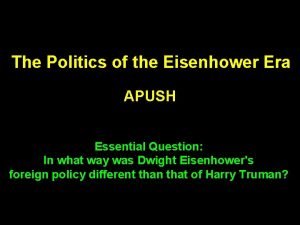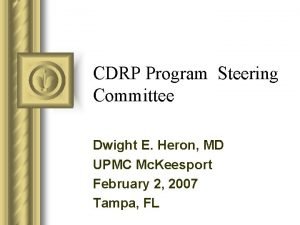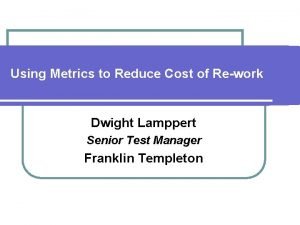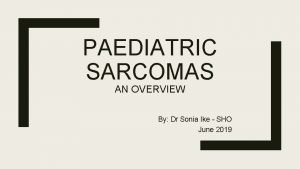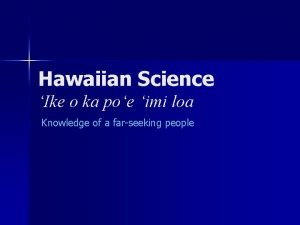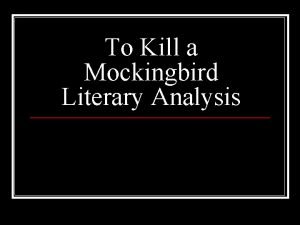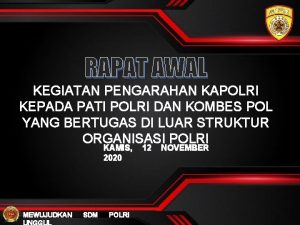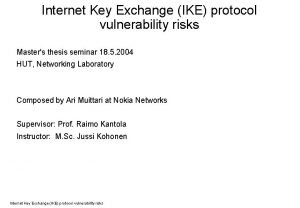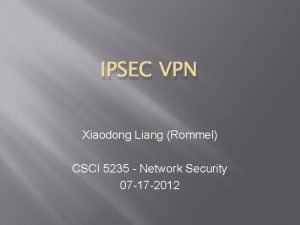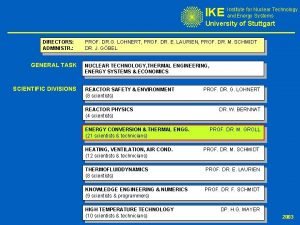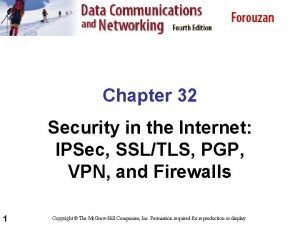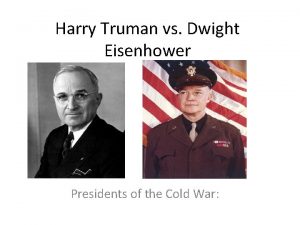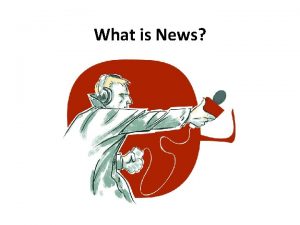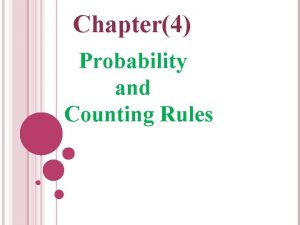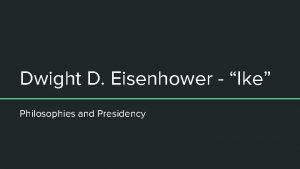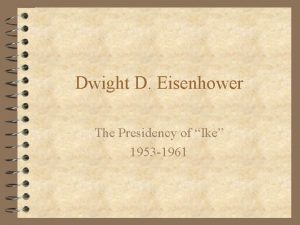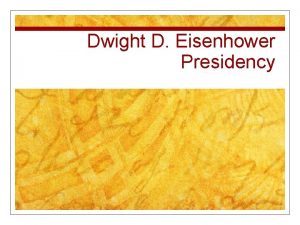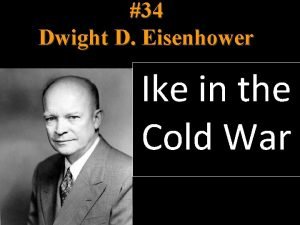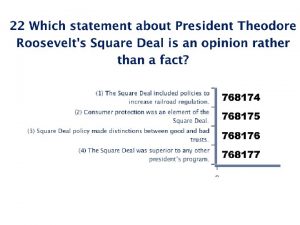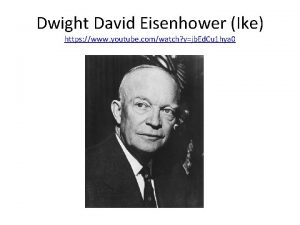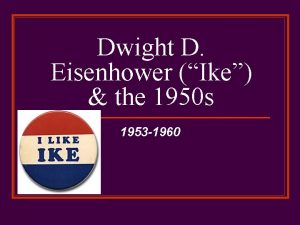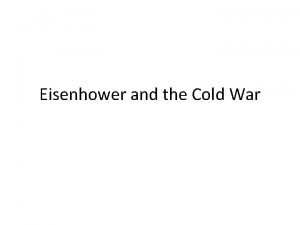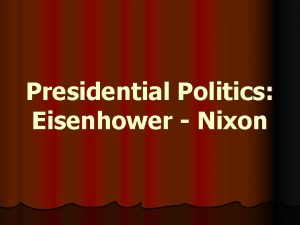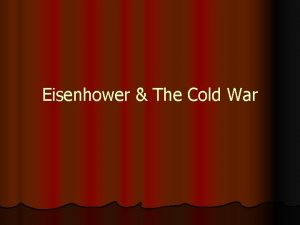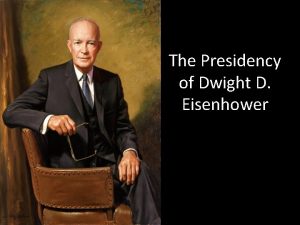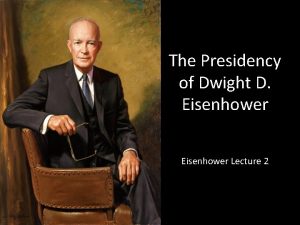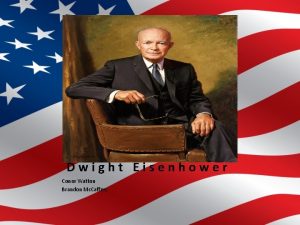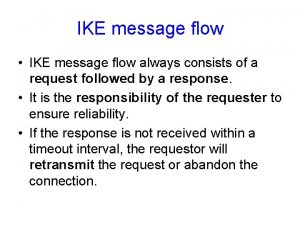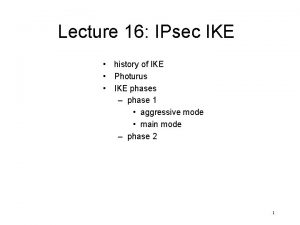Dwight D Eisenhower Ike Philosophies and Presidency News

















- Slides: 17

Dwight D. Eisenhower - “Ike” Philosophies and Presidency

News and Notes Monday May 1 st Unit 9 Assessment Unit 9 Workbook Due Unit 9 HW Due Friday may 5 th Unit 8 Retake Deadline (Multiple Choce)

Overview of Eisenhower Allied Commander for D-Day - 1944 Military Governor of US Occupied Zone in Germany - 1945 Supreme Allied Commander for NATO - 1950 Elected President - 1952 (took office in 1953) Landslide victory Brokered cease-fire for Korean War in 1953 Re-elected in 1956 by a bigger landslide than 1952 Sent out the 101 st for the Little Rock Nine President when Alaska and Hawaii were added Signed the bill creating NASA

Eisenhower - Predict Based upon Ike’s background, how do you think he will respond to the Cold War? Will he give money to struggling nations? Will he build up conventional troops - more Army, Navy, Marines and Air Force? Will he decrease conventional troops? Will he increase the nuclear ability of the US? Decrease it? Some combination of above?

Eisenhower’s Philosophy: Foreign Policy Containment: attempt to contain the spread of communism Through brinkmanship - willingness to go to the edge of war to threaten your opponent Domino Effect: the belief that if one nation falls to communism, those around will also fall to communism For example: China and North Korea Ike didn’t come up with the “Domino Theory” but it aligned well with his beliefs Mutually Assured Destruction (M. A. D. ): the idea of massive retaliation Whoever shoots first dies second

Eisenhower and Nuclear Buildup Eisenhower’s “New Look” for the military Focus on stockpiling weapons Decrease spending on conventional troops “Bigger bang for the buck” 1953 - Defense spending was $50. 5 billion 1955 - Defense spending was $35. 8 billion Look at “Long-Term Costs of the Arms Race” graphic and answer questions

Eisenhower and Nuclear Buildup

Today

How does this political cartoon reflect Eisenhower’s Foreign Policy?

Eisenhower and Korea 1953 Eisenhower takes office January 20 Armistice signed July 27 Eisenhower’s TV Address regarding Armistice No victory, remains divided at the 38 th parallel today US troops remain in Korea to this day

Eisenhower and Korea Look at graphic below and answer the questions in your workbook

Eisenhower and Khrushchev Stalin died in 1953 - leads to Soviet power struggle Nikita Khrushchev became the leader Communist, continued opposition to the US Not as suspicious of people, nor as cruel as Stalin Move toward more peaceful relations with the West 1955 - Ike and Khrushchev meet in Switzerland Move toward “peaceful coexistence” according to Khrushchev

Textbook Activity Hungarian Protests: End in bloodshed and violence Read pages 414 -416, starting at “International Cold War Conflicts” Poland Protests: “We demand bread” Suez Canal Crisis

U 2 Incident Yesterday's Air Force: The U-2 and Gary Powers Incident Complete the graphic organizer as the video plays

Eisenhower’s Final Farewell January 17, 1961 o As you read excerpts of Eisenhower’s final State of the Union Address, look for, highlight and take margin notes on the following pieces: o What are the goals of America? o How does Eisenhower describe communism? o How has the American military changed? Why did it change? o Eisenhower mentions “the military industrial complex”, what do you think he means by this? o What does Eisenhower worry about for the future?

“Military Industrial Complex” Analysis This speech is often viewed as warning against the military industrial complex. Explain the military industrial complex and what it was that Eisenhower was warning about.

Timeline of Events for Ike’s Presidency July 27, 1953 - Armistice in Korea 1953 -54 - Senator Joseph Mc. Carthy’s investigations May 7, 1954 - French lose control in Vietnam [essentially the beginning of US involvement in Vietnam] May 17, 1954 - Brown vs. Topeka Board of Education Dec. 5, 1955 - Montgomery Bus Boycott begins Oct. -Nov. 1956 - Suez Canal Crisis Oct. -Nov. 1956 - Hungarian Revolt Sept. 9, 1957 - Civil Rights Act of 1957 signed Sept. 1957 - Little Rock Nine attempt to enter Central High School Oct. 4, 1957 - Sputnik launched Jan. 31, 1958 - Explorer I launched, first US satellite July 29, 1958 - creation of NASA Nov. 1958 to early 1959 - Khrushchev indicates he wants to seek peace in Germany, calls for reunification Jan. 1, 1959 - Fidel Castro takes control of Cuba Jan. 3, 1959 - Alaska admitted as 49 th state Aug. 21, 1959 - Hawaii admitted as 50 th state Sept. 15 -27, 1959 - Khrushchev visits the U. S. May 1, 1960 - U-2 plane shot down over the U. S. S. R. Color Legend: Red – Cold War Blue – Vietnam Green – Civil Rights Purple – domestic
 Dwight d eisenhower domestic policy
Dwight d eisenhower domestic policy Dwight d eisenhower accomplishments
Dwight d eisenhower accomplishments John foster dulles apush
John foster dulles apush Dwight heron
Dwight heron Ser name
Ser name Dr sonia giordano
Dr sonia giordano Ike poe
Ike poe Direct characterization of jem in to kill a mockingbird
Direct characterization of jem in to kill a mockingbird Kompol ike yulianto
Kompol ike yulianto Ike protocol
Ike protocol Analisis data selama di lapangan model spradley
Analisis data selama di lapangan model spradley Ike creates sas for
Ike creates sas for Ike stuttgart
Ike stuttgart Ike ude
Ike ude Ike creates sas for
Ike creates sas for Eisenhower and truman compare and contrast
Eisenhower and truman compare and contrast Hard news vs soft news
Hard news vs soft news Chapter 4 probability and counting rules answers
Chapter 4 probability and counting rules answers


